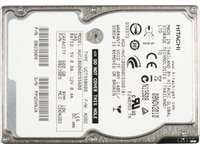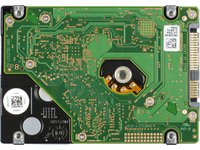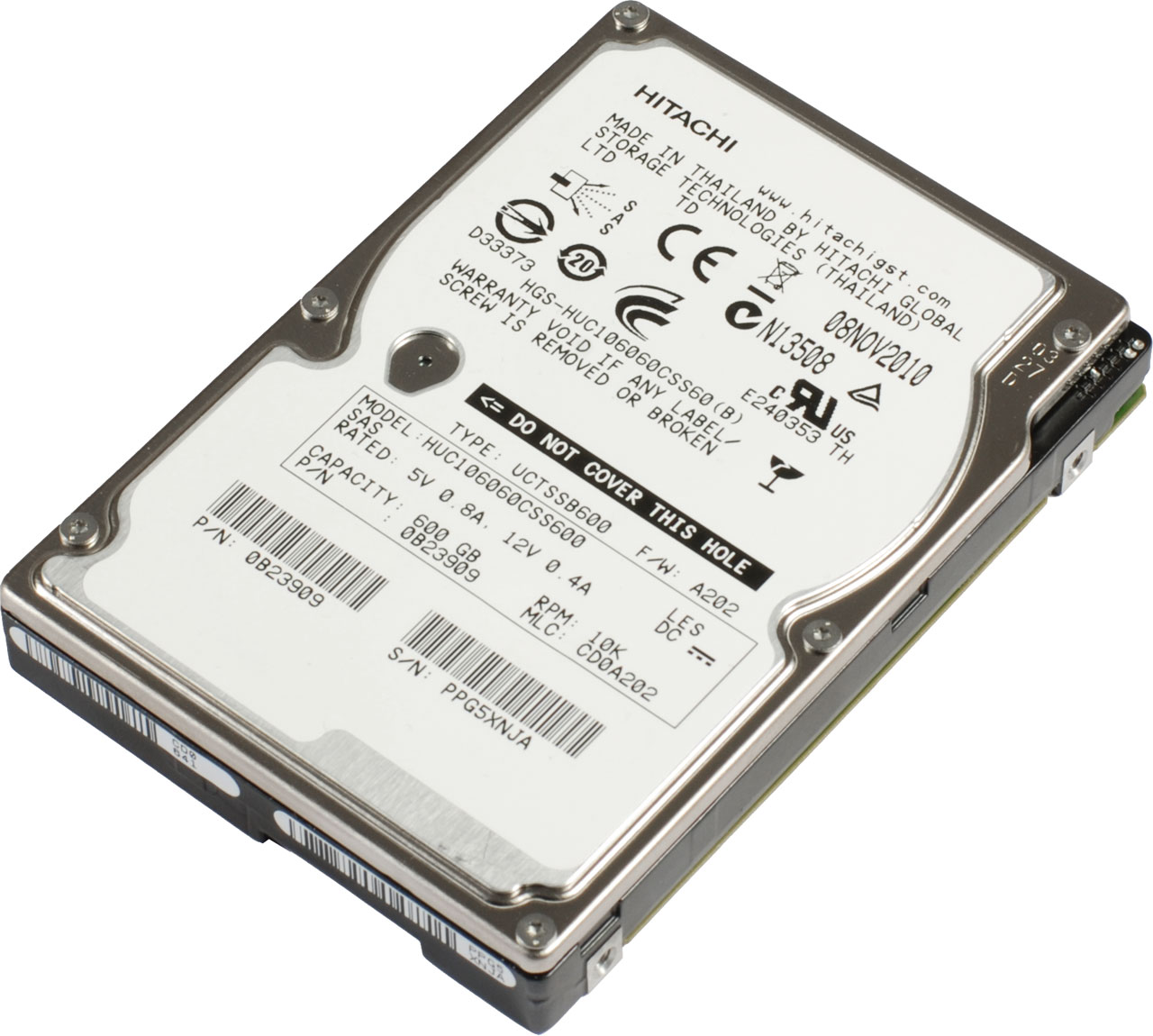Three 2.5" SAS Drives: Enterprise Data Giants, Compared
Currently, 2.5" enterprise drives are leaving their 3.5” competitors behind. They're faster, more flexible, and now they offer comparable capacities (we're up to 1 TB now). In this piece, it's Hitachi versus Seagate battling for high-density supremacy.
Hitachi Ultrastar C10K600 (600 GB)
We're starting to see the number 18 more often in product descriptions. The Seagate Savvio 10K.5 aims to deliver 18% more performance than its predecessor. Hitachi's Ultrastar C10K600 also sets its sights on this value. However, Hitachi doesn't claim to improve on the performance of its own devices. Rather, this drive's data sheet claims 18% better performance than its competition (specifically, in terms of sequential transfer rates).
As our tests show, the Hitachi drive doesn't exactly run away from the competition, but it does rank highly in almost all of the benchmarks. With average transfer rates of 139.4 MB/s, the Hitachi Ultrastar C10K600 outperforms Seagate's drives, especially in terms of I/O performance. Moreover, the device sports impressive power consumption, returning the best value in performance per watt.
A look at the Ultrastar C10K600's specifications shows that the impressive performance is no accident. The drive spins at 10 000 RPM, has a 64 MB cache and sends data at a nominal 6 Gb/s via the SAS interface. This drive family does lag behind in terms of storage space, though. Its maximum capacity of 600 GB falls 300 GB short of what the competition offers. And it isn’t cheap either: the 600 GB HUC106060CSS600 we tested sells for around $450. Hitachi also offers the Ultrastar C10K600 in 450 and 300 GB capacities, which can be had for $350 and $270, respectively. For those concerned with security, some models of the C10K600 offer hard drive-level data encryption.
Along with the high transfer rates, the small form factor, and its lower power consumption, the Ultrastar C10K600 is also attuned to server environments by virtue of its high reliability. Even in enterprise systems, Hitachi claims a MTBF of 2 million hours for its device, putting it more or less at the same level as Seagate's Savvio 10K.5.


Get Tom's Hardware's best news and in-depth reviews, straight to your inbox.
Current page: Hitachi Ultrastar C10K600 (600 GB)
Prev Page 2.5” Enterprise Hard Drives Next Page Seagate Constellation.2 (1000 GB)-
compton Toms with some more review niceness. Thanks for another interesting article. I don't think mechanical storage is going anywhere soon. For better and worse we'll still have it around for a long, long time to come. Even when SSDs hit that magical speed/capacity/cost point to be ubiquitous for mainstream consumers, enterprises will still need HDDs as part of their storage needs. HDDs are at least a known quantity that are still getting better.Reply -
bit_user 3rd paragraph: "have to be taken into considered". You also didn't mention capacity and cost/GB, where mechanical disks still reign supreme.Reply
Also, why not benchmark a 3.5" disk, but only use the outer portion. If both that and a 2.5" have the same density and rotational velocity, then the 3.5" should win due to higher I/O speeds resulting from higher linear velocity.
